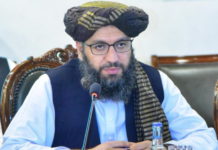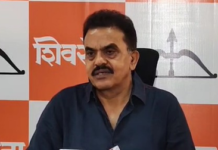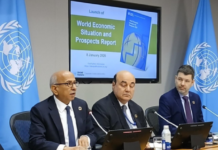NEW DELHI– The National Investigation Agency (NIA) is preparing to delve deeper into the terror links of Tahawwur Rana, focusing not just on his role in the 2008 Mumbai attacks but also on his broader connections with Lashkar-e-Taiba (LeT) and Al Qaeda operations across India—particularly in Kerala.
Rana recently admitted to the Mumbai Crime Branch that he was in the city during the 26/11 attacks and had been overseeing aspects of the operation. While local authorities are concentrating on his movements in Mumbai, the NIA is expanding the scope of the investigation, uncovering that Rana had traveled to several locations in India, including a significant visit to Kerala.
According to investigators, Rana’s trip to Kerala on November 16, 2008—just ten days before the 26/11 attacks—was carried out under instructions from Ilyas Kashmiri, then head of Al Qaeda’s 313 Brigade. Rana and David Headley, his known accomplice, had held multiple meetings with Kashmiri to discuss expanding jihadist operations in Jammu and Kashmir.
Though Rana initially claimed there was no specific reason for his Kerala visit, investigators discovered that he made calls to at least 15 different phone numbers during his stay in Kochi. Authorities are still trying to determine the identities of the call recipients. Once the ongoing investigation into the Mumbai attacks is complete, the NIA intends to shift focus toward unraveling Rana’s broader network and motives.
Evidence suggests that Rana’s Kerala visit may have been linked to a larger plan to reduce reliance on Pakistani recruits in Kashmir by mobilizing operatives from within India. This effort to “localize” the Kashmir insurgency would serve the dual purpose of undermining India’s internal security and giving Pakistan greater plausible deniability on the global stage.
This theory gained traction following a 2008 encounter in Jammu and Kashmir in which four terrorists from Kerala—Fayiz from Kannur, Abdul Rahim and Abdul Jabbar from Malappuram, and Yasin from Ernakulam—were killed. Investigations later confirmed that all four had been trained and deployed by Lashkar-e-Taiba.
During multiple intercepted conversations between Headley and Kashmiri, Kerala was frequently mentioned. Kashmiri reportedly identified northern Kerala as a key recruitment ground for his broader “Ghazwa-e-Hind” campaign—a radical pan-Islamic plan to destabilize India. A well-organized recruitment camp and underground network in the region had already been supplying fighters to the Kashmir conflict.
Rana’s visit, investigators believe, was likely a critical part of that agenda. The 15 calls made during his time in Kerala could prove instrumental in uncovering how deeply embedded this network is and what role it continues to play in pan-Islamist operations within India.
The ISI has long sought to frame the Kashmir conflict as a domestic uprising by Indians themselves. By recruiting Indian nationals into terrorist operations, Pakistan aims to create the illusion of internal dissent while shielding itself from direct accountability.
While previous investigations have hinted at the Kerala-Kashmir link, a comprehensive picture has yet to emerge. Headley, under a plea deal with the FBI, was only obligated to repeat the information already shared with U.S. authorities, and thus provided limited new details during questioning by Indian investigators.
In contrast, Rana is not bound by any such deal. This allows Indian authorities greater leverage to extract fresh information that could reveal the full extent of the Lashkar-Al Qaeda network operating in India under the guidance of Ilyas Kashmiri and with backing from Pakistan’s intelligence services.
The NIA’s next steps will be crucial in exposing not just Rana’s role in 26/11, but also the deeper, transnational terror infrastructure that sought to destabilize India far beyond Mumbai. (Source: IANS)












